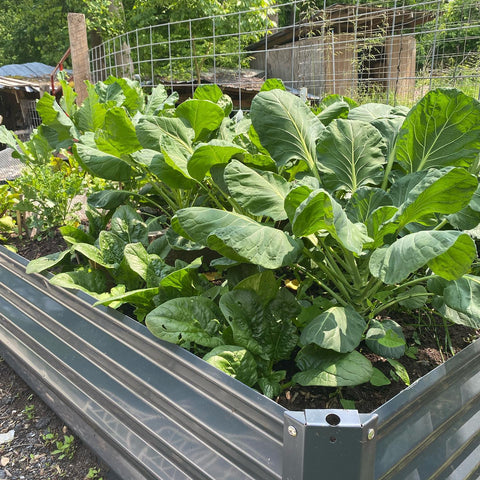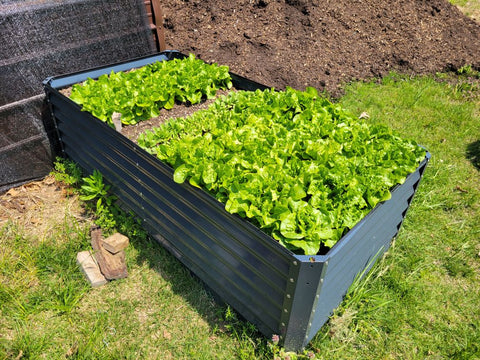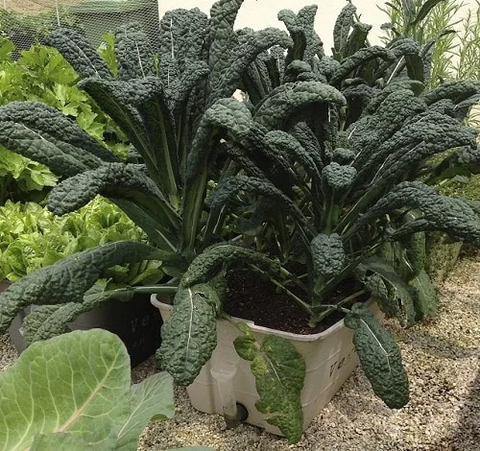Gardening enthusiasts, both novice and seasoned, understand that the battle against weeds can often be a time-consuming and never-ending task. Weeds not only compete with your prized plants for vital resources but also disrupt the neat and organized appearance of your garden. To tackle this challenge and reap the benefits of a thriving, low-maintenance garden, consider using a weed barrier in your raised garden bed. In this article, we'll explore the many compelling reasons why incorporating a weed barrier is a smart choice for gardeners and how it can transform the way you manage and enjoy your garden.The following content also has some reference value for raised garden beds.
There are several compelling reasons to put weed barriers in flower beds:
Weed control: One of the main purposes of weed barriers is to inhibit weed growth. It acts as a physical barrier to prevent weeds from germinating and penetrating the soil. This reduces the need for constant weeding and maintenance of the garden.
Plant health: Weeds compete with the plants you grow for basic resources like nutrients, water, and sunlight. By using a weed barrier, you can create a weed-free area for your plants, promoting their health and growth.

Pest control: Weeds can breed pests and diseases that can harm your garden. Weed barriers help reduce the presence of these potential threats and contribute to a healthier garden environment.
Retain moisture: Weed barrier fabrics can help retain moisture in the soil by reducing evaporation. This is especially beneficial in dry areas or during droughts, as maintaining adequate soil moisture is essential for plant health.
Prevent soil erosion: Weeds help hold the soil in place, and their absence can lead to soil erosion due to weed barriers. However, you can alleviate this problem by covering the weed barrier with mulch or other protective material.
Reduced maintenance: Weeding barriers greatly reduce the time and effort required to weed, making garden maintenance more manageable. With a weed barrier, you'll spend less time pulling weeds and more time enjoying your garden.
Soil temperature regulation: Weed barriers provide insulation and help maintain a more stable soil temperature. This is beneficial for plants that are sensitive to extreme temperature fluctuations.
Clean and beautiful garden: Weed barriers make the garden cleaner and more visually appealing by preventing unsightly weeds from invading. They can also enhance the overall design and organization of the garden.
Chemical-free gardening: By using weed barriers, you can reduce or eliminate the need for chemical herbicides and promote more environmentally friendly and sustainable gardening methods.
In conclusion, there are many benefits to using weed barriers in garden beds, including weed control, improved plant health, reduced risk of pests and diseases, moisture retention, erosion prevention, and reduced maintenance. It contributes to a more attractive and manageable garden while also supporting environmentally friendly gardening practices.
So,how do you install a weed barrier in a garden bed?
Materials and Tools You Will Need:

- Weed Barrier Fabric: You can purchase weed barrier fabric from a garden center or home improvement store. Choose a quality, durable weed barrier fabric.
- Scissors or Utility Knife: For cutting the fabric to size.
- Garden Staples or Pins: To secure the weed barrier to the bed.
- Raised Garden Bed: Make sure your garden bed is assembled and in the desired location.
Steps to Install a Weed Barrier:
- Prepare the Garden Bed:
Before installing the weed barrier, ensure that your raised garden bed is assembled and in its final location. It's easier to install the barrier before adding soil and plants.
- Measure and Cut the Weed Barrier:
Unroll the weed barrier fabric and lay it flat across the bottom of the raised garden bed. Cut the fabric to the size of the bed, leaving some extra fabric on each side to ensure complete coverage.
- Lay the Weed Barrier:
Carefully place the cut weed barrier fabric at the bottom of the raised garden bed. Make sure it covers the entire area, including the sides. The barrier fabric should extend up the sides of the bed slightly, which will help prevent weeds from infiltrating from the edges.
- Secure the Weed Barrier:
Use garden staples or pins to secure the weed barrier to the sides of the raised garden bed. Space the staples or pins a few inches apart to ensure the barrier remains in place. Make sure it is taut and flat against the bed to prevent any wrinkles or gaps where weeds could grow.

- Trim Excess Fabric:
If there is any excess fabric extending beyond the sides of the garden bed, trim it off using scissors or a utility knife. Be careful not to cut too close to the staples, as this might release the tension in the fabric.
- Cut Planting Holes:
If you are planting directly into the weed barrier, use a pair of scissors or a utility knife to cut X-shaped or cross-shaped holes in the barrier fabric where you want to plant your flowers, vegetables, or herbs. The size of the holes should be slightly larger than the root ball of the plant you're adding.
- Plant Your Garden:
After the weed barrier is in place, you can proceed to plant your garden. Gently lift the flaps of the barrier fabric where you've cut planting holes and insert your plants. The fabric will help keep the area around your plants weed-free.
- Cover with Mulch or Soil:
To further deter weed growth and improve the overall appearance of your raised garden bed, cover the weed barrier with a layer of mulch or soil. This will also help retain moisture and regulate soil temperature.
By following these steps, you can effectively install a weed barrier in your raised garden bed. This barrier will help keep your garden bed free from weeds, making maintenance easier and allowing your plants to thrive without competition from unwanted vegetation.










Comments
S White said:
Hi we have taken these steps and planted using a cross, a lot of the flowers i have planted spread to at least 30cm, how will the plants spread if the weed barrier mesh is in the way please?